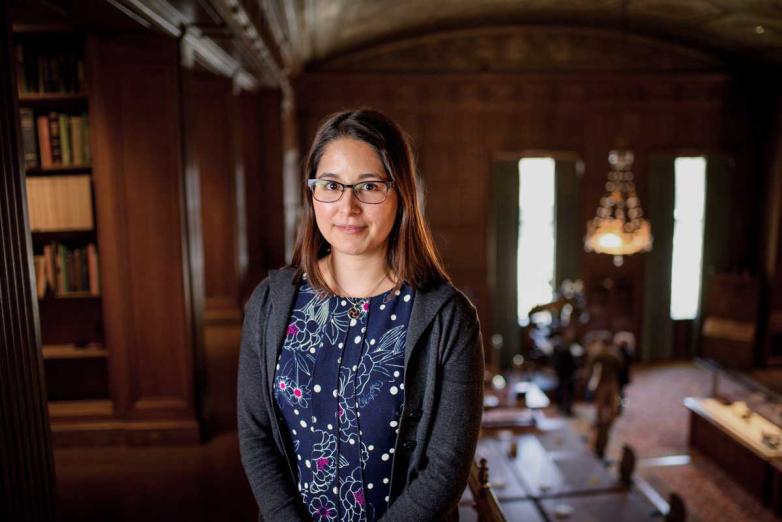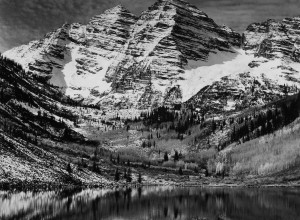Bright Young Librarians: Emiko Hastings

Emiko Hastings
Our Bright Young Librarians series continues today with Emiko Hastings at the University of Michigan.
What is your role at your institution?
I am the Curator of Books and Digital Projects Librarian at the William L. Clements Library, University of Michigan. The Clements Library specializes in early American history, with particular strengths in 18th and 19th century American history. The collection I care for includes books, pamphlets, broadsides, and newspapers documenting American history from the 15th to the 20th century. As curator, I oversee the operations of the Book Division, including collection development, donor relations, library instruction sessions, reference, and outreach.
Wearing my other hat, I am in charge of the library’s growing digitization program and the management of various digital projects such as the implementation of software like Aeon to support our collection services. The digitization program started very modestly with a single book scanner and funding for one intern, but it’s expanded in recent years to support a full-time digitization specialist and now three technicians funded by a National Endowment for the Humanities grant to digitize the Thomas Gage papers. I feel fortunate that this position has allowed me to grow as a professional and become involved in a variety of aspects of the library’s work, many of which I could not have predicted when I started.
How did you get started in special collections?
During my undergraduate studies at Whitman College, I found a student job in the Penrose Library at the Whitman College and Northwest Archives. I had previously thought I wanted to be a public librarian, but this position gave me a wonderful opportunity to learn about archives and special collections for the first time. I learned how to process historical materials and write finding aids and even curated a small exhibit. I completed two summer internships at different special collections libraries and decided to attend graduate school in Information Science at the University of Michigan, specializing in Archives and Records management. During that time, I worked at the Clements Library as a graduate student assistant and was hired into the position of Assistant Curator of Books when I graduated.
Favorite rare book / ephemera that you've handled?
One of the items that I treasure most from my personal collection is a book called Bookmaking on the Distaff Side. It was produced in 1937 by a group of women printers, and each signature is printed by a different press. The wide variety of papers and different typography throughout the book makes it a tactile as well as a visual pleasure to read.
What do you personally collect?
For a number of years, I’ve been collecting works by and about women bibliophiles. This includes catalogues of women’s libraries, memoirs and biographies of individual women collectors, dealers, and bibliographers, and secondary sources about women’s reading and collecting activities. I also collect catalogues of imaginary books and miniature books about books.
What do you like to do outside of work?
Outside of work, I enjoy craft projects such as cross-stitch and embroidery, as well as building dollhouse miniatures. I recently completed a three-story dollhouse townhouse modeled after a Brooklyn brownstone. It’s decorated as a tiny library that houses my collection of dollhouse miniature books.
What excites you about special collections librarianship?
It may be a cliché, but one of the most rewarding aspects of this job is the opportunity to learn something new every day. I learn from the students who come into the library and ask thought-provoking questions and from the researchers who send reference questions and work with materials in the reading room. Most of all, I value the connections with colleagues in the library and elsewhere, who teach me so much about what it means to be a special collections professional.
Thoughts on the future of special collections librarianship?
An optimistic trend I see is a movement towards greater access and openness among archives and special collections. Institutions are striving to become more inclusive in what they collect and the audiences they serve, broadening their access to a wider variety of users. Special collections can be intimidating and exclusionary places, but I hope the field will continue to become more open and inviting to newcomers.
One challenge is the lack of permanent full-time positions in special collections libraries. It’s difficult for new professionals to enter the field when positions are highly competitive, salaries are relatively low, and many entry-level positions are term-limited.
Any unusual or interesting collection at your library you'd like to draw our attention to?
We are currently running a crowdsourcing project called Picturing Michigan’s Past to describe and categorize over 60,000 real-photo postcards of Michigan history. This is part of the David V. Tinder Collection of Michigan Photography, which includes over 100,000 historical photographs of Michigan from the 1840s to the mid-1900s. The images document everyday life in Michigan, including street scenes, businesses, people, transportation, agriculture and lumber industries, and much more. We’re asking participants to transcribe printed captions and handwritten text, identify photographers and dates found on the cards, and describe the general subject matter of the photographs. It has been incredibly rewarding to see the enthusiastic response to this project and the many fascinating images that have emerged through the subject tagging.
Any upcoming exhibitions at your library?
I’m delighted to share a student-curated exhibit that just opened earlier this month, Family Secrets: Uncovering Identity in 19th-Century America. It was created by the students of instructor Grace Argo’s History 195 class, in collaboration with Maggie Vanderford and Julie Fremuth at the Clements Library. The expanded online version of the exhibit provides additional information about the exhibit materials and essays written by the students. The theme of “family secrets” allowed them to delve into concepts of the family as an American institution and how the definition has changed over time. The students explored concepts of self-definition and issues of gender, class and race, and also examined the challenges of forced family separation through examples of African American enslavement and Indigenous displacement.














